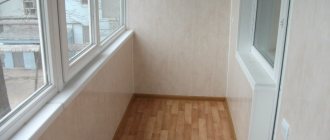Often, when buying a home, people do not know what is included in the living area of the apartment. This indicator directly affects the cost of square meters, so it is important to find out all the nuances before purchasing an apartment. Many people are interested in whether the balcony is included in the living area of the apartment or not. It is necessary to understand the difference in the concepts of “total housing area” and “living area”. These questions are especially relevant for those who purchase housing in shared ownership.
What is meant by usable area
To understand what is included in the concept of “living area of an apartment,” you need to know the definition of usable area. This parameter reflects the total area of residential and non-residential premises. It does not include utility rooms. The presented interpretation is typical for the Russian Federation. In Western countries, useful means only that space that is used for specific purposes.
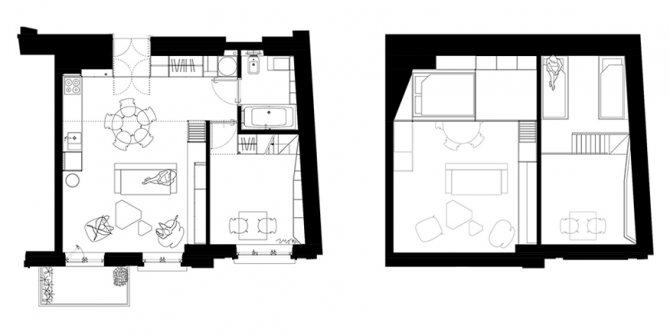
Which rooms are considered residential?
From the previous definitions it is clear that a living room is one that is intended for direct living. That is, the BTI employee taking measurements of the house will determine the living area in accordance with the names of the rooms that are indicated in the project or floor plan. Apparently the technique is as follows:
- All areas are measured.
- Areas that are not included in the total area (The area of an apartment in a residential building is defined as the sum of the areas of living rooms and utility rooms, excluding loggias, balconies, verandas, terraces and cold storage rooms, vestibules . - BTI Instruction, clause 3.36).
- The area of utility rooms is determined (Utility rooms include the area of kitchens, corridors, baths, toilets, built-in closets, storage rooms, as well as the area occupied by the apartment staircase - BTI Instruction, clause 3.36).
What premises do we still have:
- bedroom
- cabinet,
- restroom,
- dining room*
- living room.
* Please note that the “kitchen-dining room” will most likely be classified as a utility room (after all, it is a kitchen). If you really want to increase the share of living space, you can call it a dining room in the project, or even better, a living room, and to a fair question from a BTI engineer: “Where is your kitchen?” - say that you are going to make a summer kitchen outside. If I were a BTI employee, I wouldn’t believe it :).
The vestibule is clearly classified as premises that do not belong to the general area. The hallway is not on this list, but it is definitely taken into account in the total area when measuring the apartment.
If anyone has more accurate or newer information on this topic, please leave a comment.
comments 3
- Yuri Petrovich:
11/12/2013 at 16:19Help determine the area in a living space that must be taken into account when calculating the air exchange rate.
Login to reply
- Alexander:
01.12.2015 at 13:59
Greetings! What is the benefit of classifying the kitchen as a living space?
Login to reply
- Igor:
02/12/2016 at 16:48
The Housing Code of the Russian Federation with commentaries, as well as federal laws and laws of the constituent entities of the Russian Federation can be found here: http: / / mosadvokat. org/ zhilishhnyj - kodeks - rf - s - kommentariyami /
Login to reply
Click to cancel reply.
What is meant by living space
In order to know what is included in the living space of an apartment, you should identify the components of the living space in the house. Most often, this term refers to the total value of space in all rooms that are suitable for habitation.
It is difficult to do the calculations correctly in apartments that have been converted into studios. Some people mistakenly believe that the kitchen is included in the living area of the apartment. According to the Housing Code, this statement is erroneous. Based on the definition, we can say that the kitchen is not included in the list of premises suitable for living. Even those kitchens that have equipped sleeping areas will not be an exception.
It turns out that the living area of the apartment includes all premises suitable for living. Using calculations you can determine the total amount.
What is the difference between common and living space?
The living area of a private house includes the area of living rooms
The concept of the total area of the house is taken into account when calculating the norm that should fall on each person living in a given room. If it does not meet the standard, then the person has the right to get on the waiting list to improve their living conditions.
In addition, this parameter is taken into account when calculating the cost of heating if a heat meter is not installed in the apartment or house. In this case, you have to pay for all heated rooms in the building.
The living area must be indicated in advertisements when selling, since this parameter allows you to estimate the actual size of the living space. So in a large house a spacious hallway or vestibule can be equipped, but the rooms themselves will be small and cramped. The decision must be made not only after evaluating the documents, but also after a visual inspection of the house.
If the management company incorrectly calculates the cost of heating due to the total area incorrectly indicated in the documents, it is necessary to reissue the technical passport, after which the corresponding changes are made to the cadastral passport and certificate of ownership. After this, the management company will have to recalculate.
What is meant by total living area
When registering a home, many people do not know whether the balcony is included in the living area of the apartment. Based on SNIP “Residential Buildings” we can say that this concept means the following elements of the apartment space:
- Bedroom.
- Living room.
- Kitchen.
- Hallway and dressing room.
- Bathroom and toilet, if the bathroom in the house is separate.
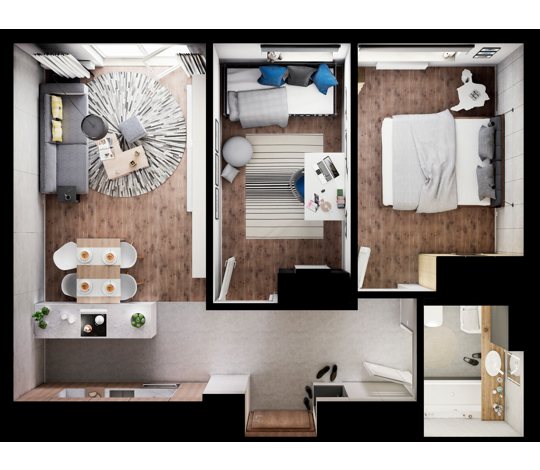
It must be remembered that the definition cannot include a terrace, balcony and loggia. To calculate the total living space in an apartment, you need to add up the space in all available rooms. In this case, different coefficients are used during the calculation. We also note that the concepts of “loggia” and “balcony” are different (we’ll look at why this is a little later).
Apartment area
This term refers to the entire property. It includes both the common and residential area of the apartment building, as well as additional facilities. It is in it that the balcony and loggia are indicated, for which the space is called useful. In our country, this indicator is taken into account when concluding real estate transactions, while abroad only operated premises are taken into account. Because of this, many people have a misunderstanding of the difference in different types of area. How to calculate it correctly will be discussed below.
What coefficients are used when calculating
For correct calculations, you need to know what is included in the living area of the apartment, and also take into account certain coefficients. All current rules on this issue can be found in SNIPs. For each type of premises, a different coefficient is used.
If calculations are carried out indicating the area of the loggia, then a coefficient of 0.5 must be applied. Balconies and terraces are considered with an indicator of 0.3. If the house has a veranda, then a coefficient of 1 should be used.
When making calculations, you need to remember simple mathematical techniques, for example, how to calculate the area of a square or rectangle. It all depends on the shape of the room. But there are also non-standard rooms. In this case, all walls are measured. Let's look at how to do this correctly below.

Calculation coefficients
It is easy to determine the living area - just take the total value of square meters in all rooms that fit this definition. Additionally, certain coefficients specified in SNiPs are taken into account. Each room has its own.
If for some reason the dimensions of the loggia are calculated, a coefficient of 0.5 is applied. For balconies and terraces – 0.3. For buildings that have verandas, a coefficient of 1 is provided. The same figure is used when cold (unheated) storerooms are taken into account.
The calculations are easy, just add the meters of each room. True, this rule only applies if the shape of the room is correct (geometrically proportional square, rectangle). If not, you need to measure along the walls with a tape measure.
Interesting fact!
You need to measure the area of the walls using the inside of the baseboard. If you don’t want to do this, you can ask for an extract from the BTI. The exact values for all rooms are indicated there.
It is noteworthy that the coefficients for loggias and balconies are different, because they are different. The first has a ceiling with walls on the sides, and is located, as it were, inside the building. The balcony, on the contrary, extends beyond the boundaries of the house.
Do you need repairs?
We have already renovated more than 500 apartments, we will be happy to help you too
Find out the cost of repairs
How to measure walls
Not every person knows how to measure walls correctly. Measurement data is important when calculating the area of housing. If the calculations are carried out incorrectly, this will affect the cost of square meters. Most often, when calculating, the area value is greater than it actually is. Such calculations are beneficial to sellers, since they will receive a larger amount of money than they expected before the sale of the apartment. Buyers are advised to check the paperwork more carefully when completing a transaction. It is best to request an extract from the BTI for a specific apartment. In it you can see not only the plan, but also all the exact values of the areas.
It is recommended to take measurements on the inside of the baseboard. If you follow this recommendation, you will be able to avoid mistakes in your work.
What additionally is included in the living space
Please note that additional parameters may be included. These include:
- Partitions.
- Niches that are higher than two meters.
- Arches, if they exceed two meters in height.
- Stairs, if there are any inside the apartment.
- Heating stove, as well as other protruding elements.
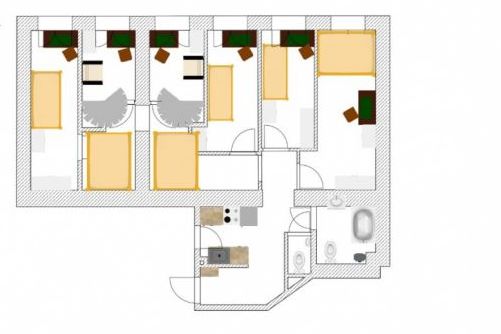
If homeowners want to get accurate data about the area of their apartment, then they can invite measurers who quickly make calculations. You need to pay for this work, but you can be sure that the calculation of the living space was carried out in accordance with all standards and requirements.
What is included in the living area of the apartment? Should I count the balcony?
More than half of apartment owners are not satisfied with the layout of their property. In this regard, citizens often engage in reconstruction, allowing them to change the arrangement of rooms and increase or decrease the size of the living space of the room. Before carrying out repair and construction work, the owner must obtain permission to remodel the room.
This is important to know: Who should change windows in a municipal apartment
If a technical passport has not yet been issued, the owner of the premises first needs to call a technical engineer who will carry out the necessary measurements. If changes have occurred in the apartment (for example, remodeling a room), you should also call a specialist again to enter new information into the housing registration certificate.
What is the difference between calculating the area in apartments in a new building?
When a person buys a home in a new building, he can sign a shared development agreement. In such cases, all measurements, as well as area calculations, are carried out taking into account reduction factors. The contract must clearly state all values used. The developer can decide for himself what to take as a basis: the total area of the apartment or only the living area. If the latter value is taken, then the price per square meter of housing in this house will increase. If the developer bases it on gross square footage, then buyers have the opportunity to purchase the home at a lower price. When buying an apartment, it is important to carefully study the contract.
There are times when people check the values indicated in the document and realize that they differ from the real values. In this case, the buyer who registered shared ownership has the right to return money for meters that he does not have.
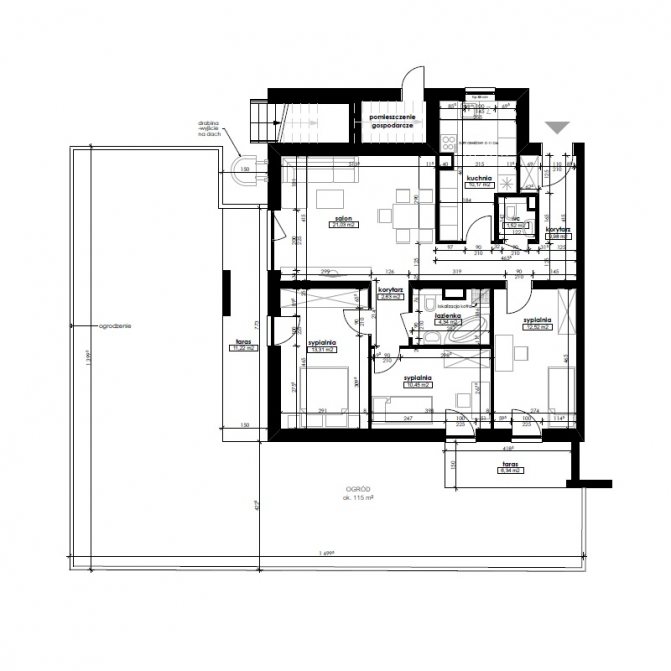
When it is important to know the difference between the living area and the total area of the apartment
- When choosing real estate, it is important to remember that balconies or loggias are not included in the total area of the property . When purchasing an apartment, it is worth checking whether the owner (the development company) included them in the overall square footage of the apartment. This is important, since the total area of all premises affects the market value. Sometimes the footage of a balcony or loggia can be taken into account, but then this must be done with a reduced coefficient.
- The living area is always less than the total area , with the exception of the case discussed above, therefore, even if two apartments have the same total square footage, one apartment may seem smaller than the other due to the smaller area of the living rooms.
- It is important to know that fees for housing maintenance and major repairs, as well as utility bills (in the absence of an individual meter), directly depend on the total living space . Property tax and rental fees are also calculated.
- The size of the living space is the main indicator for determining the degree of need of a family to improve living conditions. Also, this indicator will play a decisive role when allocating housing to a family under a social lease agreement or allocating funds for its purchase under government social programs, for example, for young families, orphans and military personnel.
- In an apartment building, the common property is divided between the apartment owners, also based on the total square footage of the occupied apartments. And this share, in turn, is decisive in the distribution of the number of votes at the general meeting of owners in apartment buildings. That is, the more squares there are in the property, the greater the role the owner plays in resolving general house issues.
This is important to know: Preferential mortgage for secondary housing in 2020

There are many situations in life when knowing which concept is used and when can be useful. Awareness of this issue will help in real estate transactions or in monitoring the correct calculation of utility bills and determining social norms, which can greatly make life easier and save the family budget.
Why are different coefficients used when calculating the area of a loggia and the area of a balcony?
You should pay more attention to the question of how a loggia differs from a balcony, and also take into account different coefficients. Many people believe that there is no difference between a loggia and a balcony. Such judgments are erroneous. To calculate the area taking into account the loggia, use a coefficient of 0.5. To find out the area with a balcony, use a coefficient of 0.3.
The main difference between a balcony and a loggia is that the first protrudes beyond the perimeter of the building. And the loggia is included in the living area of the apartment. It has side walls as well as a ceiling.
Main components of the apartment
You may be interested in: CPC "Tyumen Savings Fund": reviews
Channel PROGRAMMER'S DIARY
The life of a programmer and interesting reviews of everything. Subscribe so you don't miss new videos.
What is included in the living area of the house? Before answering this question, it is necessary to understand its main components. Any property, regardless of area and number of rooms, has three of them:
- total area;
- residential;
- apartment area.
If you do not understand these concepts, you will not be able to be sure what kind of apartment you are buying. The main problem with this is that not all sellers provide such information to their clients. As a result, people overpay and face many problems in the future.
Why is it important to know the correct area of the apartment?
For the buyer, one of the important questions will be to find out the actual area of the apartment. The footage of the apartment is important, since based on these indicators the cost of the apartment increases or decreases.
This value will also affect utility bills. If homeowners do not have special meters installed for water and gas, then they are charged an amount based on the total area of the home. There are exceptions to this calculation system. Unheated rooms and storage rooms are not taken into account. The receipt for utility bills contains a clause that describes general household needs. This parameter is also influenced by the value of the total area of housing.
What does the area of the apartment affect?
The legislator distinguishes three types of residential premises:
The total area of the residential premises is used for the following purposes:
- heating fee ;
- calculating the homeowner’s share in the common property of an apartment building (the share is proportional to the size of the total area);
- calculation of the tax base when paying tax on land located in common shared ownership (proportional to the size of the total area);
- calculating the tax base when paying tax on residential premises and tax deduction for property tax for individuals;
- determining the cost of 1 m 2 of total area when transferring residential premises to citizens if their previous home is recognized as unsafe and included in the regional program for relocating citizens from unsafe housing stock;
- determining the standard for providing housing;
- determining the accounting standard for residential premises based on the size of which, the level of housing provision for citizens is determined;
- determining the size of housing space allocated under a social rental agreement or for ownership of various categories of persons (military personnel, disabled people, orphans, etc.);
- calculating the amount of gratuitous social payments for housing using federal budget funds.
At the moment, 28 constituent entities of the Russian Federation have switched to this order, including Moscow, Buryatia, Bashkortostan, Vladimir, Ivanovo regions, etc. In connection with this change in the procedure for calculating tax, the tax burden on citizens increases, so the legislator established deductions (tax-free areas) for residential properties in the amount of 20 m 2 of total area for an apartment, 10 m 2 for a room, 50 m 2 - for home.
This is important to know: Acquisitive prescription for real estate under Art. 234 Civil Code of the Russian Federation: judicial practice
Determining the size of living space is advisable for:
- determining the size of the sanitary standard for housing;
- provision of housing in a hostel (at least 6 m2 per person) (Article 105 of the Housing Code of the Russian Federation);
- housing assessments for concluding a real estate purchase and sale agreement;
- drawing up an act of inspection of the living conditions of a minor by the guardianship and trusteeship authorities;
- concluding a mortgage ;
- drawing up a transfer and acceptance certificate under contracts of sale, exchange, rent, social tenancy.
Determining the area of the premises is carried out for the purposes of:
- determining the size of housing owned by a citizen when providing him with an apartment under a social tenancy agreement;
- statistical accounting of the housing stock in the Russian Federation, calculating the amount of payment for housing and utilities, determining the social standard of housing and other purposes;
- calculating the cost of payment for general house needs;
- calculating the amount of subsidies for housing and utilities.
Thus, the three categories of residential premises are used for different purposes and it is important to determine when and which category is used in accordance with the legislation of the Russian Federation.
